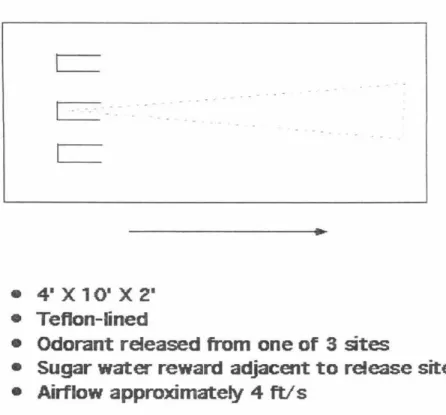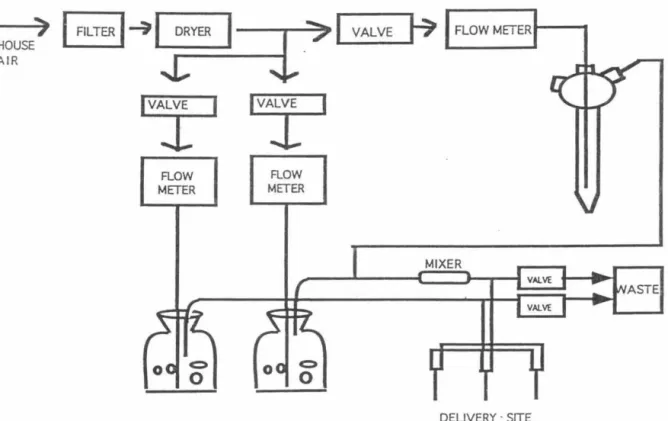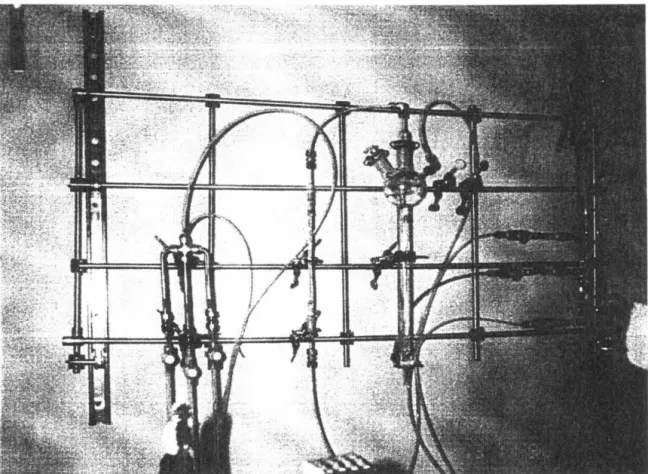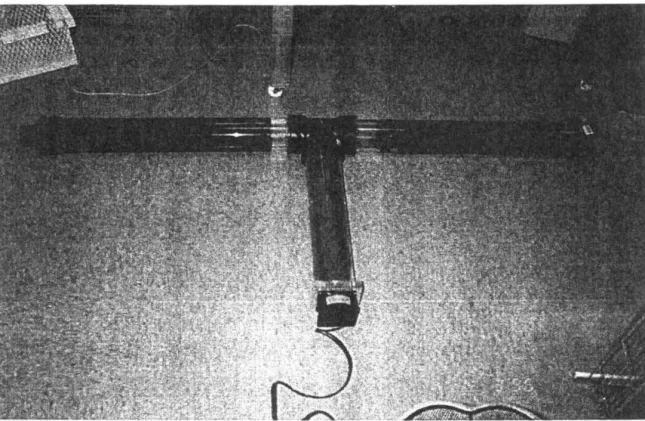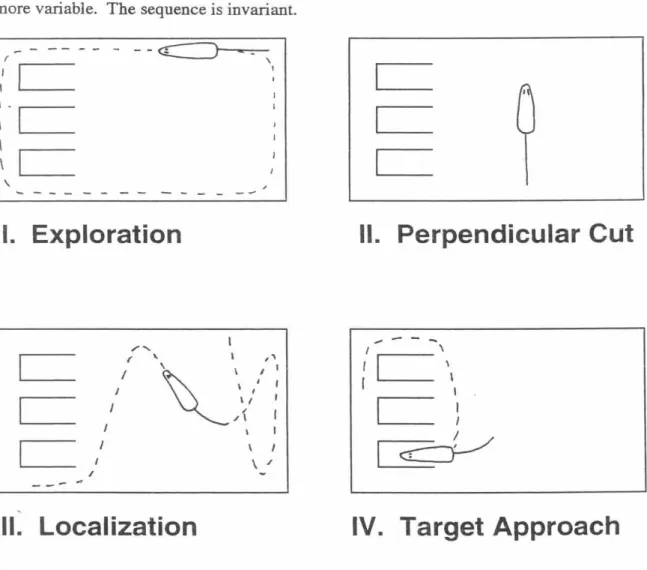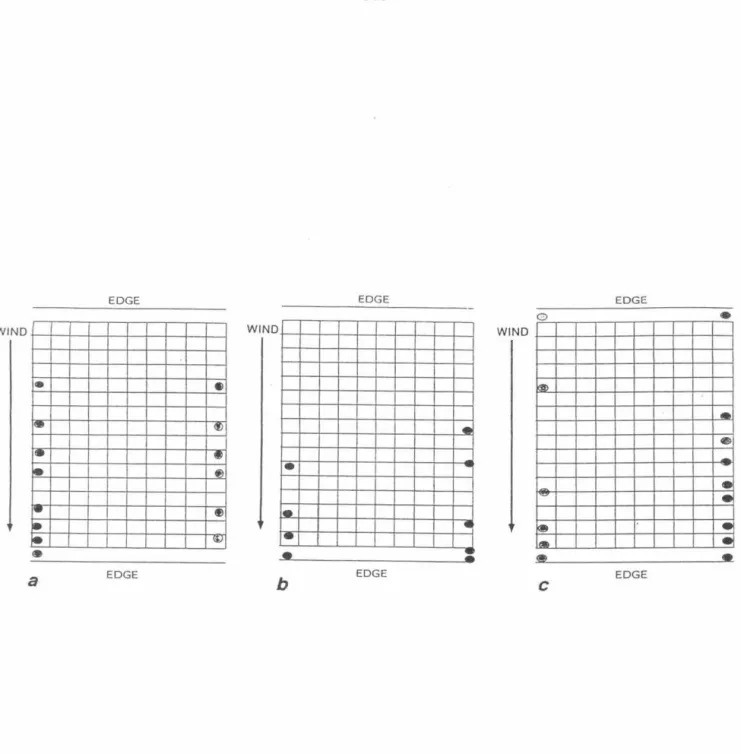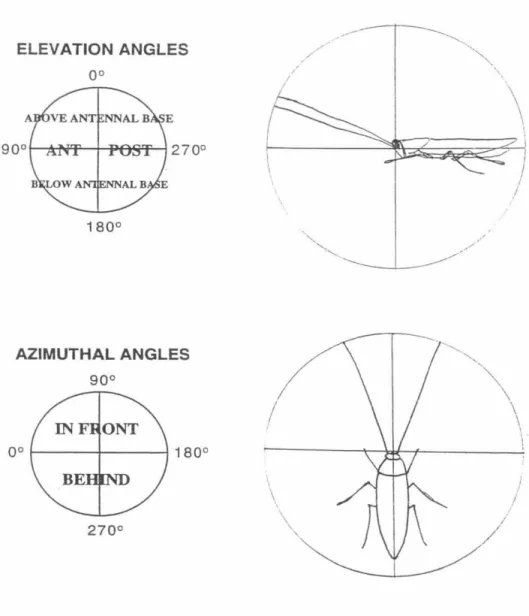The biological view has predictive power while the current chemical view does not, and the biological view offers explanations for some of the most fundamental questions about olfaction that remain unanswered by the chemical view. Accordingly, it is likely that some other order exists in the chemical environment, and that this order is reflected in the organization of the olfactory system, which sorts objects based on the molecules they release. The next three chapters focus on the organization of olfactory perception, what it suggests about the natural order of chemicals in the environment, and what this suggests about the organization of the olfactory system.
Olfactory Search Behavior of Rats
A lm X 3m grid was taped to the wooden floor and side of the wind tunnel, with each grid measuring 10cm2. The wooden surface is then sealed in Teflon film. 1 Design and construction by David Kewley of the Bower Lab, at the California Institute of. Odor was emitted from one of three sites on the windward side of the tunnel (Figures 1 and 2).
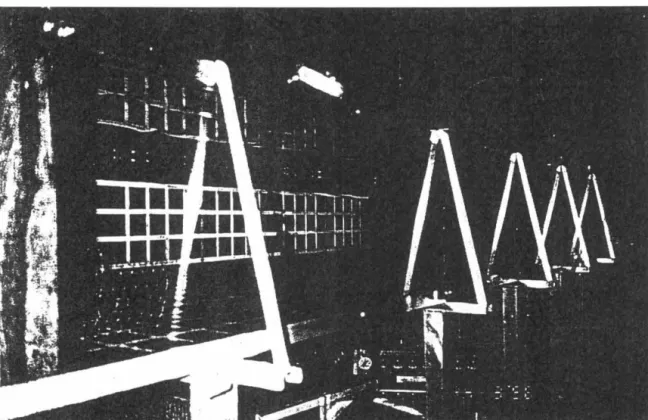
WIND TIJN-JEL
Exploration
Ill. Localization
Perpendicular Cut
Target Approach
This behavior is usually observed when the mouse is along the edges of the tunnel. While sniffing in this position, the mouse moves its head from one side of its body to the other. These pauses occur at almost the same spatial position along the edges of the wind tunnel.
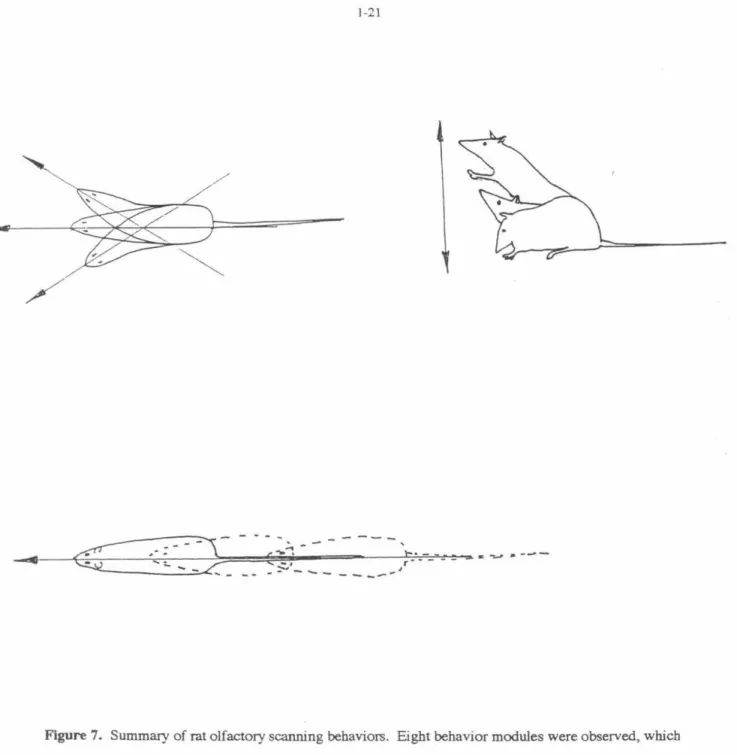
Olfactory Scanning Behaviors*
Abductor (7) and adductor (6) muscles are attached to the scape (Scp) and inserted on the pedicel (Pdc), allowing movement of the pedicel and flagellum in the horizontal plane. Levator (5) and depressor (4) muscles are inserted on the scape, which provides movement of the entire antenna in the vertical plane. The levator and depressor muscles are inserted on the scape, providing movement of the entire antenna in the vertical plane.
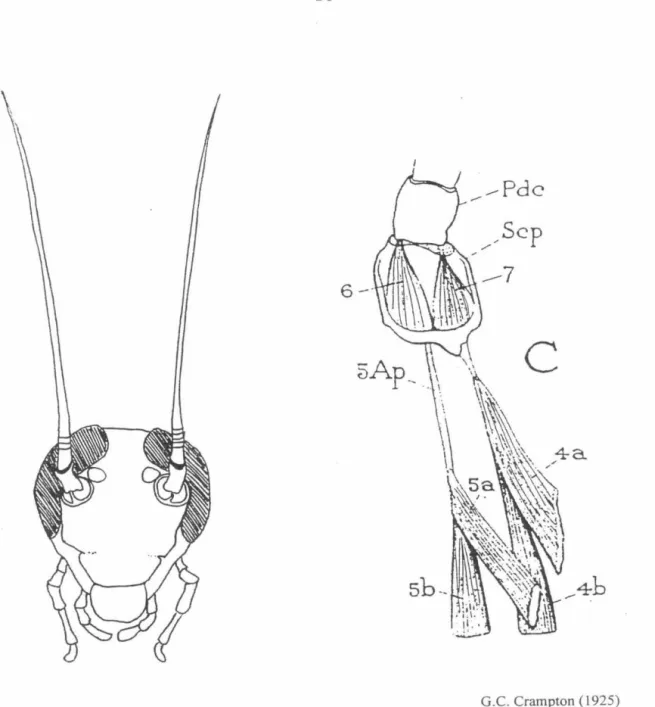
3D Exposure to Odorant: Animal #5
30 Exposure to Odorant: Animal #6
Upon presentation of the odor, antennae were simultaneously raised (i) and contracted in the horizontal plane (ii) after odor stimulation. This graph can be seen as if we were viewing the animal from the side, and the tips of the antennae traced a path in time.). This graph can be seen as if the tips of the antennas were dipped in ink, and the plot was a chart recorder scrolling to the left.).
20 Exposure to Odorant: Animal #1
20 Exposure to Odorant: Animal #1
Immediately after odor stimulation, the antennae are raised simultaneously ((i) in Figure 3a), and move towards each other in the horizontal plane ((ii) in Figure 3b). However, this brief period of coordinated movement appears to be the only time that the left and right antennae show coupled activity. In general, the movement of the antennae appears to be a series of dorsal-ventral arcs or circles that sweep laterally.
In the vertical plane, the height amplitude changed from about 5–10 degrees before (maximum 30 degrees) to about 40–60 degrees after stimulation. In both examples this represented a shift slightly up, but other experiments suggest that this is not a general rule. The musculature of the cockroach antenna allows for rotation around the longitudinal axis of the antenna during normal movement.
The calculation of the volume determined by the limits of the range of motion of the antenna} includes the space scanned by the antenna as well as the "sweep" towards the odor source. Since there is a large degree of overlap in the area scanned by both antennas, the total scanned volume is approximately 93.5 cm3. In general, after olfactory stimulation, each antenna increases the volume of the scanned space by an order of magnitude.
The greatest variation in beat rate was between the still air condition and when the air was moving, so it is likely that the antennae were responding to general air movement rather than specific air speed.
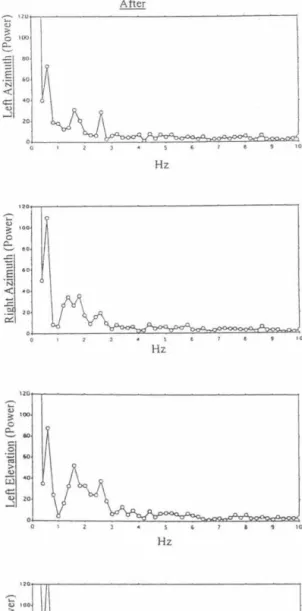
In the absence of air currents, cockroaches did not respond to an odor source blown into the chamber. Because the antennas are very thin and the movements are fast compared to the shutter speed of the camera, the contrast. It was not possible to mark the antennae as even the slightest touch of marking fluid would cause the antenna to bend under.
Thus, there may be errors in the digitization of a moving point captured by two different cameras due to the observer's selection of the digitization point. However, repeated digitization of the same trial at 60 Hz showed qualitatively equivalent motion patterns. This can result in an error of one frame in the trajectory of a point, at a digitization frequency of approximately 60 Hz.
In the case of odors, active movements can enhance the interaction between the stimulus and olfactory receptors by either controlling the flow of odor-bearing media past. Studies of the fluid flow properties around arthropod antennae suggest that antenna structure and movements can be optimized for odorant transport. Hansson, B., et at., Physiological responses and central nerve projections of antennal/olfactory receptor neurons in the adult desert locust, Schistocerca gregaria (Orthoptera: Acrididae).
Malun, D., et al., The connection between the deutocerebrum and tlze protocerebrum, and the neuroanatomy of several classes of deutocerebrai projection neurons in the brain of male Periplaneta americana.
BIOLOGICAL SEARCH STRATEGIES FOR CHEMICAL PLUME TRACING*
A Map of Odor Quality
Intensity describes the strength of the smell, and is related to the concentration of the stimulus. The organization of stimuli seems highly fragmented; an understanding of the chemical organization relevant to olfaction remains elusive. However, because the organization of stimuli is unclear, the relationship of the odor responses to each other (olfactory properties) is also unclear.
Such a map could be used much like any city map: it would describe the boundaries of the odor "space" and important odor features in the space. If such patterns could be identified in a map of odor qualities, they could provide valuable clues to the organization of the stimulus space. To capture the asymmetry in the connection between two notes, we use the metric.
In other cases, a single scent may show multiple connections because these connections are equally strong. In each diagram, an arrow indicates the strongest (i.e. the highest numerical value of the metnc "I") connection from one fragrance note to another. This structure led us to qualitatively identify the location of the odor qualities generated by compounds containing different key atoms, which were found to lie in contiguous areas on the map.
Mitra Hartmann contributed equally to the formulation of the distance metric used in the maps.
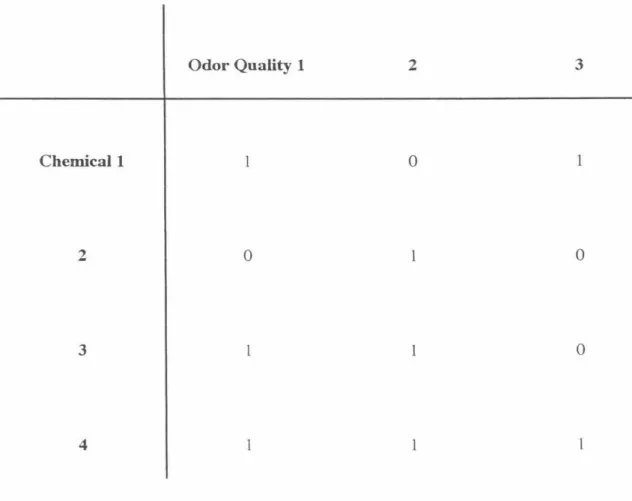
Perceptual Shifts in Odor Quality
Immediately thereafter, subjects were presented with three one-second puffs of the test stimulus, each separated by a 5-second interval. Subjects were asked to rate the complex quality of the test stimulus odor, using the descriptors Jasmine, Lavender, Bergamot, and Peppermint. Subjects were also asked to rate the intensity of the adapting stimulus and the test stimulus.
In all evaluations, subjects were instructed to provide a numerical response ranging from 0 (not detected) to 9 (maximum value). Subjects therefore received verbal instructions to increase their awareness of the dimensions of odor perception relevant to this experiment, and to enable them to focus their attention on the odor quality component. The subjects were presented with three puffs of a randomly selected odorant and then had to key in their answer.
Subjects were verbally introduced to the concept that color is a multidimensional perception, and were asked to consider only one characteristic (saturation level) of color. The subjects were then tested on their ability to categorize color samples based on saturation value. After the individual color tests, the subjects were then tested on their ability to judge multiple color samples simultaneously. Each panel consisted of four color samples (red, orange, green, and blue) with random saturation.
Subjects were assessed on their ability to respond consistently to variations in the saturation level for each color, and on the four-color panel task.
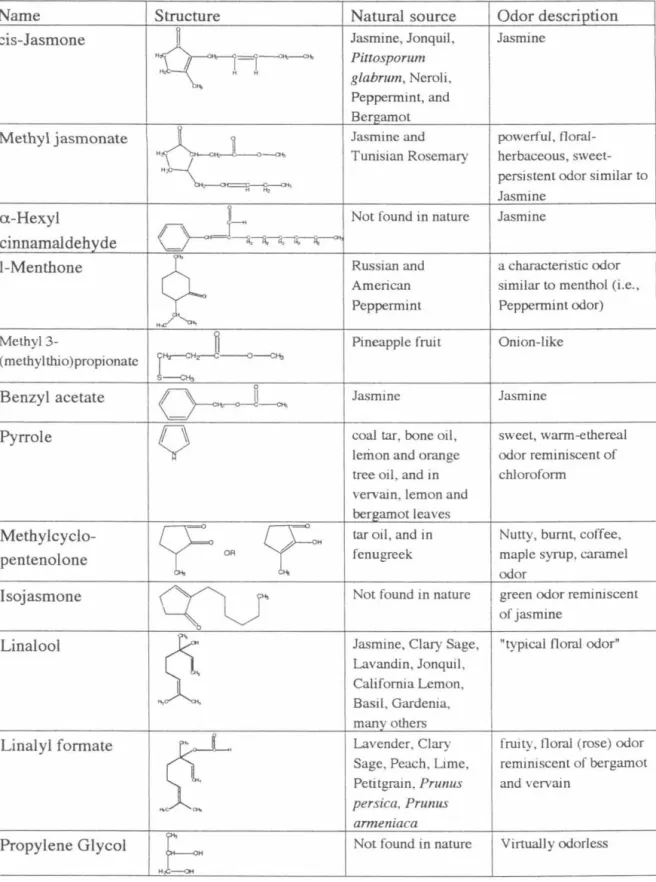
Color Scaling Task (Summary)
The goal was to keep the intensity of the sample roughly the same, but allow the specific intensity of an odor note to vary. Subjects learned to identify six different samples of a lavender note according to the level of its specific intensity. Subjects were then tested on their ability to categorize the same series according to the specific intensity of lavender, then another series according to the specific intensity of jasmine.
Odor Scaling Task
Olfaction--the biological sense
Our results raise the possibility that the olfactory system may be organized around a metabolic (i.e., a biological) order. This idea represents a shift from the classical view that the olfactory system is a general chemical detector and classifier. In this view, the function of the olfactory system is to represent features in the biological environment, with sufficient timing, accuracy, and detail to allow the animal to respond appropriately.
Many studies investigate the ability of the olfactory system to respond to compounds that differ by a "small change" in chemical structure. Structurally similar compounds are encountered by the olfactory system in one of two environments: in the laboratory (produced by chemists) or in nature (produced by enzyme catalysis). Because the neural organization of the olfactory system appears to be based on patterns of receptor specificity.
The neural organization of the olfactory system appears highly organized and, possibly, chemotopically ordered around the specificity of olfactory receptors. A biological view of olfactory receptor specificity is consistent with the methods used to trace anatomical and functional pathways in the olfactory system. For the olfactory system to represent features of the biological environment, it is reasonable to expect that it is able to distinguish biologically relevant compounds from a background of other chemical compounds.
To assess the efficiency of the olfactory system in this task, it is useful to understand the differences between naturally occurring biological compounds and other compounds.
NATURALLY OCCURRING
NOT FOUND IN
NATURE
BIOGEOCHEMICAL
PROCESSES LINK COMPOUNDS IN DIFFERENT COMPARTMENTS
BIOLOGICAL
NON-BIOLOGICAL
The ability of the olfactory system to discriminate by perception is not limited to enantiomeric pairs. These observations may be explained by the olfactory system distinguishing between compounds based on their different biological sources. In the biologically based view of smell perception, one of the most important tasks of the olfactory system is to convey biological information encoded in the chemical stimulus.
How this information is encoded in the chemical stimulus and how the olfactory system decodes it and maps it into odor perception. These questions can best be answered by considering the evolutionary origins of the olfactory system. The olfactory system and the biological environment in which it operates appear to complement each other.
The compounds detected by the olfactory system are likely to be those compounds necessary for the survival of the host organism (eg primary metabolites). The olfactory system extracts biological information from a single compound, and this information is conveyed through its olfactory quality. The olfactory system takes in biological patterns of compounds, and transmits the biological information encoded in them as an odor perception.
Odor quality may have a specific biological meaning (eg, the identity of the biological source of the compound causing the odor).
APPENDIX A
List 1. Odor descriptors for Aldrich data
